
Exploring the Untamed Beauty of Tayrona National Natural Park
Discover the enchanting landscapes and rich cultural history of Tayrona National Natural Park, a hidden gem on Colombia's Caribbean coast.
Tayrona National Natural Park, located on the Caribbean coast of Colombia, is a paradise for nature lovers and adventure seekers alike. The park spans over 150 square kilometers of lush rainforest, pristine beaches, and ancient ruins, offering visitors a unique blend of natural beauty and cultural heritage. As you wander through the trails, you will encounter a rich diversity of flora and fauna, including howler monkeys, exotic birds, and vibrant butterflies. The park's beaches, such as Playa Cristal and Cabo San Juan, are perfect for swimming, snorkeling, and sunbathing, with crystal-clear waters and soft white sand. For those interested in history, the ancient ruins of the Tayrona civilization, known as Pueblito, provide a fascinating glimpse into the past. The well-preserved stone terraces and structures are a testament to the ingenuity and resilience of the indigenous people who once thrived in this region. Whether you're hiking through dense jungles, relaxing on secluded beaches, or exploring archaeological sites, Tayrona National Natural Park offers an unforgettable experience that will leave you in awe of Colombia's natural wonders.
Local tips in Tayrona National Natural Park
- Bring insect repellent to protect against mosquitoes, especially during the rainy season.
- Wear comfortable hiking shoes for the park's rugged trails and uneven terrain.
- Pack plenty of water and snacks, as there are limited facilities within the park.
- Visit early in the morning to avoid crowds and enjoy cooler temperatures.
- Check the weather forecast and be prepared for sudden changes in conditions.
Exploring the Untamed Beauty of Tayrona National Natural Park
Tayrona National Natural Park, located on the Caribbean coast of Colombia, is a paradise for nature lovers and adventure seekers alike. The park spans over 150 square kilometers of lush rainforest, pristine beaches, and ancient ruins, offering visitors a unique blend of natural beauty and cultural heritage. As you wander through the trails, you will encounter a rich diversity of flora and fauna, including howler monkeys, exotic birds, and vibrant butterflies. The park's beaches, such as Playa Cristal and Cabo San Juan, are perfect for swimming, snorkeling, and sunbathing, with crystal-clear waters and soft white sand. For those interested in history, the ancient ruins of the Tayrona civilization, known as Pueblito, provide a fascinating glimpse into the past. The well-preserved stone terraces and structures are a testament to the ingenuity and resilience of the indigenous people who once thrived in this region. Whether you're hiking through dense jungles, relaxing on secluded beaches, or exploring archaeological sites, Tayrona National Natural Park offers an unforgettable experience that will leave you in awe of Colombia's natural wonders.
When is the best time to go to Tayrona National Natural Park?
Iconic landmarks you can’t miss
Parque Nacional Natural Tayrona
Explore the breathtaking beauty of Parque Nacional Natural Tayrona, where lush jungles meet pristine beaches for an unforgettable adventure in Colombia.
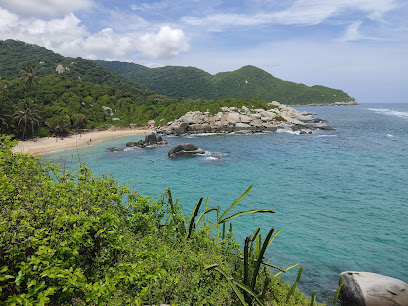
Tayrona Park
Explore Tayrona Park, a breathtaking national park in Colombia featuring stunning beaches, rich biodiversity, and cultural heritage.
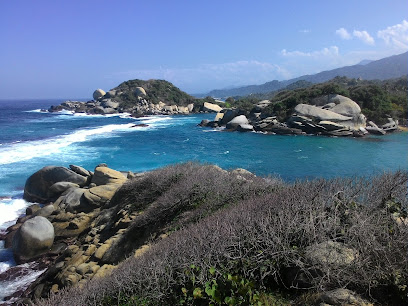
Parque Natural Tayrona
Explore the stunning landscapes, rich biodiversity, and cultural heritage of Parque Natural Tayrona, a must-visit coastal paradise in Colombia.
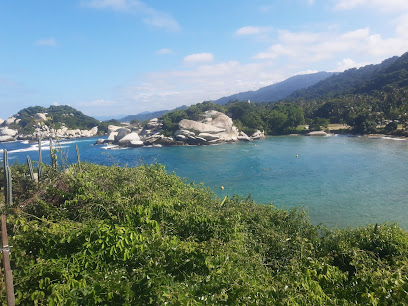
Neguanje parque tayrona
Discover the serene beauty of Neguanje in Parque Tayrona, a hidden paradise with stunning beaches, rich wildlife, and lush landscapes perfect for every traveler.

Unmissable attractions to see
Tayrona Park entrance
Explore the breathtaking landscapes and vibrant wildlife of Tayrona Park, a must-visit national park near Santa Marta, Colombia.

Farallones National Natural Park
Discover the breathtaking landscapes and rich biodiversity of Farallones National Natural Park, a paradise for hikers and nature lovers in Valle del Cauca.
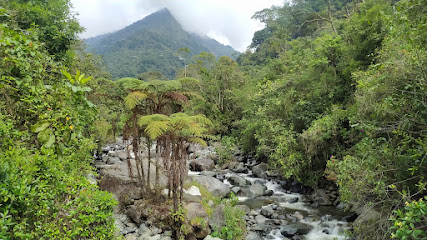
El Mono ROjo
Dive into the vibrant nightlife of Santa Marta at El Mono Rojo, a lively disco club and bar known for its energetic atmosphere and great music.
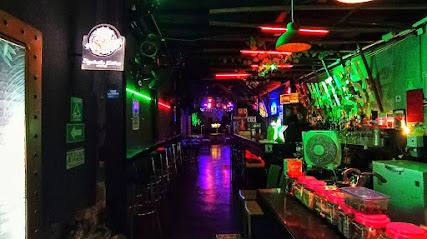
Parque Nacional Natural Macuira
Experience the stunning landscapes and rich biodiversity of Parque Nacional Natural Macuira, a must-visit national park in La Guajira, Colombia.

Neguanje
Explore the stunning landscapes, rich biodiversity, and vibrant culture of Tayrona National Park, a must-visit gem on Colombia's Caribbean coast.
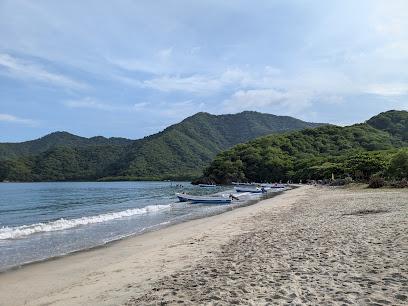
Serranía De Los Yariguíes National Natural Park
Explore the scenic trails, rich biodiversity, and cultural significance of Serranía De Los Yariguíes National Natural Park in Santander, Colombia.
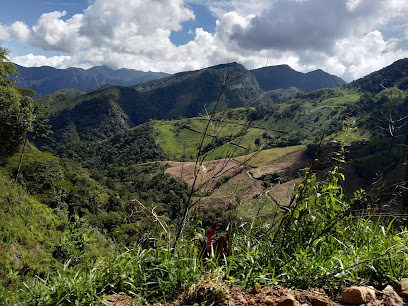
Mirador Parque Tayrona
Experience breathtaking views and tranquil nature at Mirador Parque Tayrona, an observation deck in Colombia's stunning Tayrona National Park.
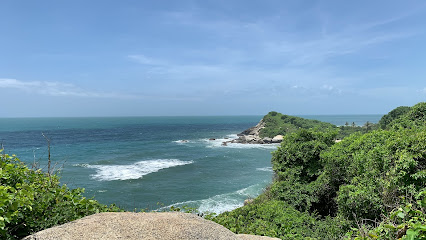
Boca De Saco, PNN Tayrona
Explore Boca De Saco in PNN Tayrona, a paradise of pristine beaches, lush trails, and rich biodiversity, perfect for nature lovers and adventurers alike.

Cahuinarí National Natural Park
Experience the enchanting biodiversity and tranquil beauty of Cahuinarí National Natural Park in the heart of Colombia's Amazonas region.
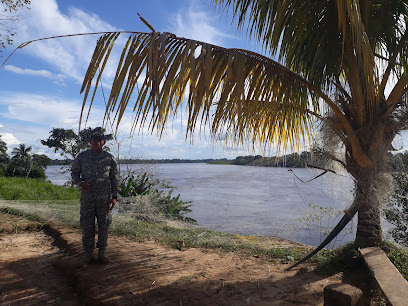
Parque Nacional Natural McBean Lagoon
Discover the breathtaking biodiversity and stunning landscapes of Parque Nacional Natural McBean Lagoon in Providencia and Santa Catalina Islands.
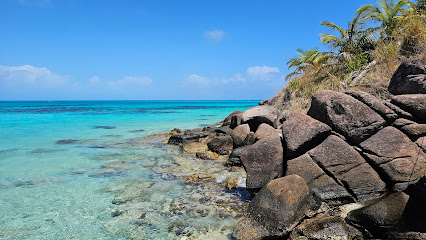
Bukaru, Parque Tayrona
Discover Bukaru in Parque Tayrona: a stunning blend of pristine beaches and lush jungles, perfect for adventure and relaxation in Colombia's Caribbean paradise.
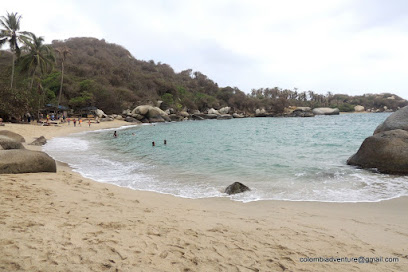
Playa Cinto
Experience the serene beauty of Playa Cinto, Santa Marta - a pristine beach paradise perfect for relaxation and adventure in Colombia.
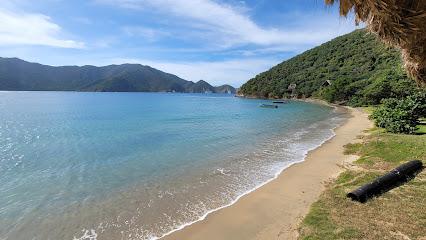
Essential places to dine
Parque Tayrona
Explore the stunning landscapes and rich biodiversity at Parque Tayrona – a Caribbean paradise in Colombia.
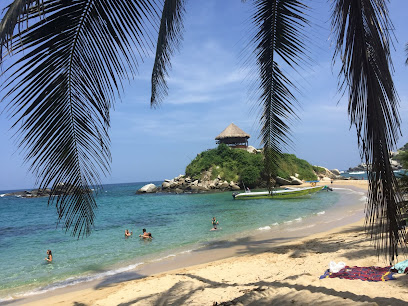
TAYRONA RESTAURANT - BAR - top rated
Experience authentic Caribbean cuisine at Tayrona Restaurant & Bar in Cañaveral - a vibrant dining destination near Santa Marta's breathtaking landscapes.
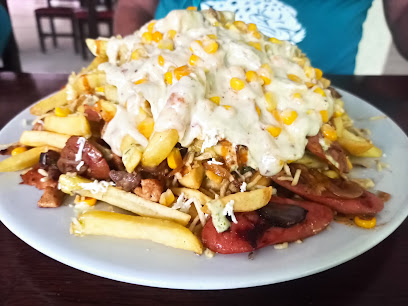
RESTAURANTE YACHAY TAYRONA
Discover RESTAURANTE YACHAY TAYRONA: A culinary oasis within Tayrona National Park offering local flavors and breathtaking views.
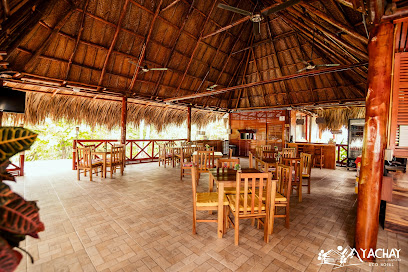
Markets, malls and hidden boutiques
Parque Nacional Natural Tayrona
Experience the breathtaking landscapes and rich biodiversity of Parque Nacional Natural Tayrona, a gem of Colombia's Caribbean coast.

Tayrona Park entrance
Tayrona Park: A breathtaking national park in Colombia, showcasing stunning beaches, lush jungles, and rich cultural heritage.
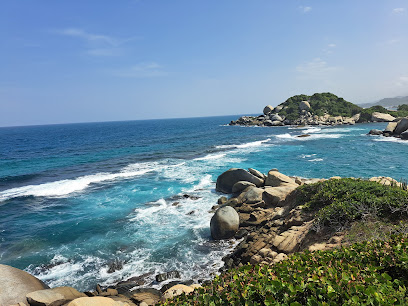
El Yucal
Discover the vibrant essence of Santa Marta at El Yucal, your destination for authentic local crafts and unique souvenirs.

Tayrona Park
Discover the breathtaking landscapes and rich biodiversity of Tayrona Park, Colombia's Caribbean gem, perfect for adventure and relaxation.
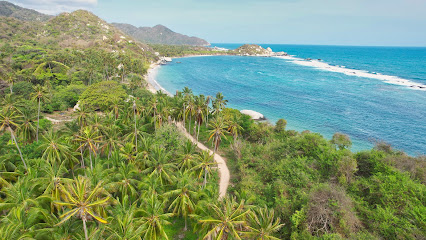
Desayunos Sorpresa Santa Marta
Experience the authentic taste of Colombia with delicious breakfasts and unique gifts at Desayunos Sorpresa Santa Marta.

ECOHOTEL YACHAY TAYRONA
Discover tranquility and eco-friendly luxury at Ecohotel Yachay Tayrona, your gateway to the stunning landscapes of Tayrona National Park.
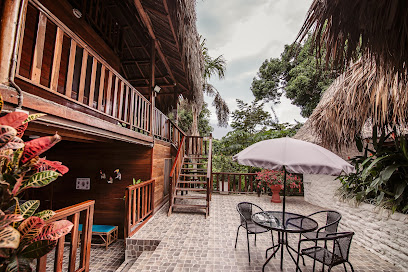
KOAJ C. C, BUENAVISTA SANTA MARTA
Explore the latest fashion trends at KOAJ C. C in Santa Marta's vibrant Buenavista Shopping Center, a hub for style and culture.

Anchetas, Desayunos y Detalles Sorpresas Santa Marta
Explore the charming Anchetas in Santa Marta for exquisite gift baskets filled with local delicacies and artisanal treasures, a true taste of Colombia.

Panaderia Bere
Explore the rich flavors of Panaderia Bere in Santa Marta, where freshly baked pastries and artisan breads await every visitor.
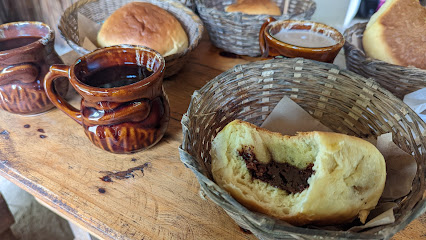
Parque Natural Tayrona
Discover the natural splendor and cultural richness of Parque Natural Tayrona, a tropical paradise on Colombia's Caribbean coast.
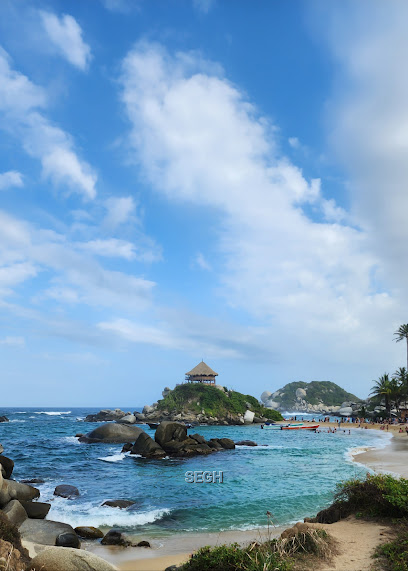
Tienda Hacaritama
Explore the charm of Tienda Hacaritama, Santa Marta's premier gift shop for authentic crafts, tools, and a cozy internet café experience.
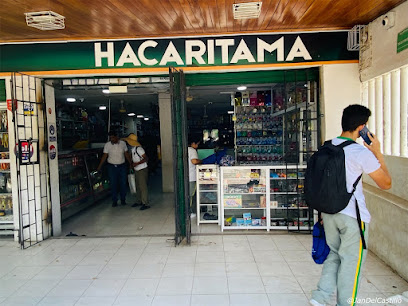
Yurelkshop
Discover the perfect bridal gown at Yurelkshop in Santa Marta, where elegance, style, and personalized service come together for your special day.

Happy City Ocean Mall
Discover shopping, gaming, and dining at Happy City Ocean Mall, the vibrant heart of Santa Marta's entertainment scene.
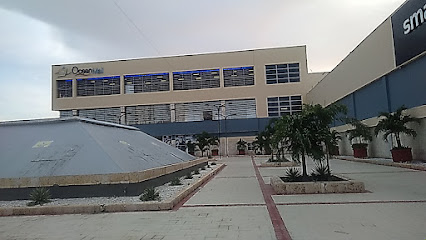
SEVEN/SEVEN BUENAVISTA SANTA MARTA
Discover the latest fashion trends at SEVEN/SEVEN Buenavista in Santa Marta, where style meets culture in a vibrant shopping experience.

hotel parque real
Discover the charm of Santa Marta at Hotel Parque Real, where comfort meets adventure in the heart of Colombia's stunning coastal paradise.
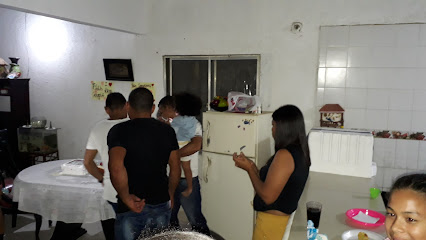
Essential bars & hidden hideouts
Pachamama Restaurante Bar
Experience the vibrant flavors of Taganga at Pachamama Restaurante Bar, where grilled delights meet stunning beach views.
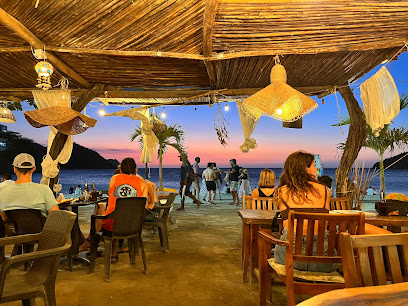
La Puerta
Experience the vibrant nightlife of Santa Marta at La Puerta, where local culture meets unforgettable entertainment in a lively bar atmosphere.
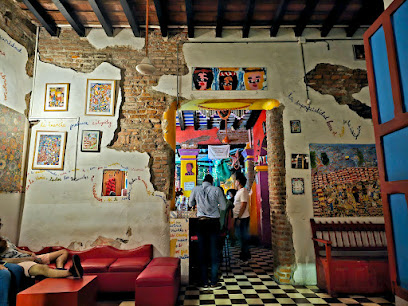
Caribbean Team
Discover the taste of the Caribbean at Caribbean Team in Santa Marta, where grilled delights and fast food favorites create a culinary experience like no other.
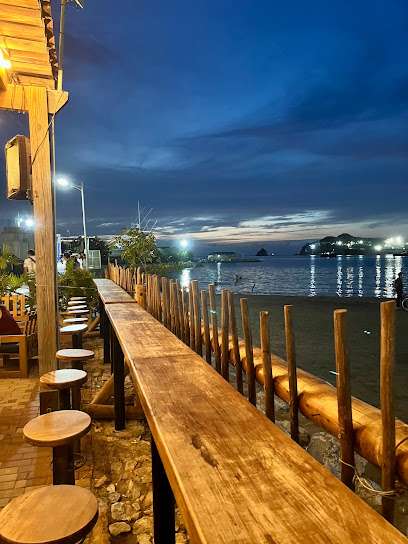
Crab's Bar
Experience the vibrant nightlife of Santa Marta at Crab's Bar, where cocktails and local culture collide in a lively atmosphere.
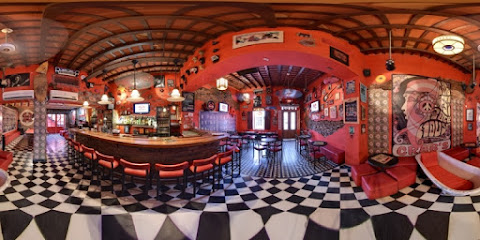
BeerTown
Experience the best of Colombian grill cuisine at BeerTown, a lively bar and grill in Santa Marta, perfect for food lovers and social gatherings.
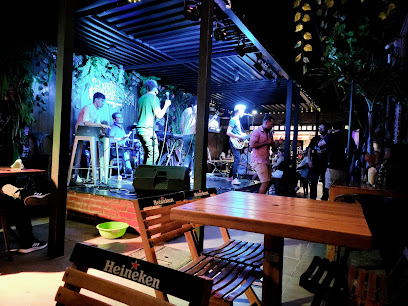
La Azotea Disco Bar Santa Marta
Discover the vibrant nightlife of Santa Marta at La Azotea Disco Bar, where cocktails flow and the music keeps you dancing all night.
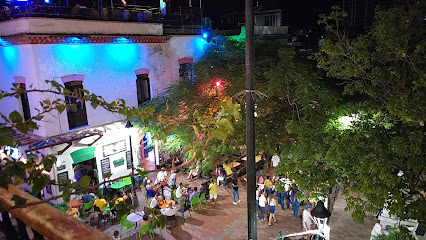
Los Hermanos Beach Hostal & Bar
Experience the perfect blend of relaxation and adventure at Los Hermanos Beach Hostal & Bar, your gateway to the stunning Guachaca coastline.
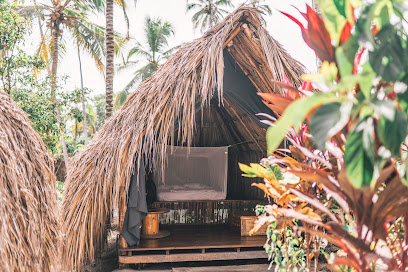
Charlie's Bar
Discover the vibrant nightlife of Santa Marta at Charlie's Bar, renowned for its exquisite cocktails and lively atmosphere in Colombia.
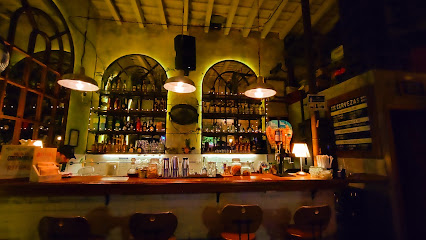
Ziruma Bar Zuana Beach Resort
Ziruma Bar offers a vibrant blend of cocktails and local cuisine in Santa Marta, perfect for relaxation and evening celebrations by the beach.
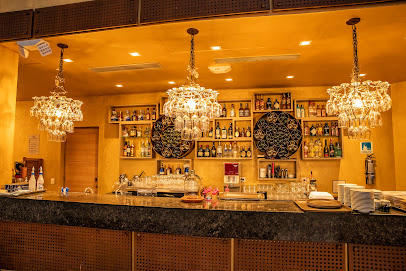
Marley Bar Reggae Rock 80's
Discover Marley Bar Reggae Rock 80's in Santa Marta for an unforgettable night of music, drinks, and vibrant culture.
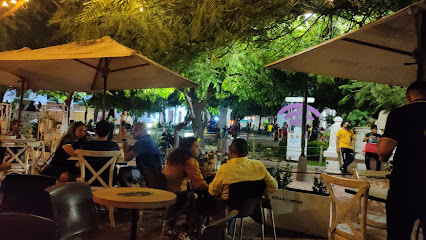
BEAT BEACH
Discover the vibrant nightlife at Beat Beach in Taganga, Colombia, where live music and a lively atmosphere create unforgettable memories.
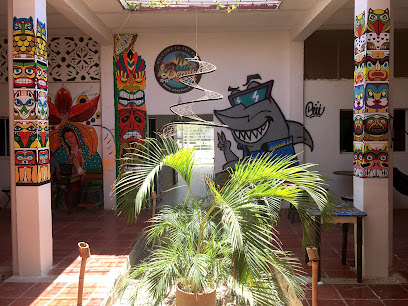
Divijuca Restaurante Bar
Experience the vibrant flavors of Colombia at Divijuca Restaurante Bar in Taganga, where fresh seafood and grilled delights await.
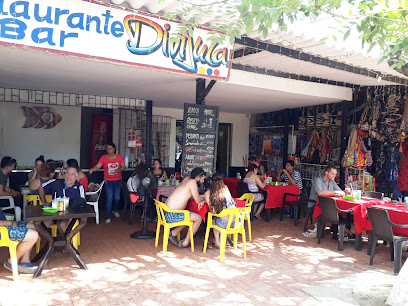
La Luna Rock Bar
Experience the vibrant nightlife of Santa Marta at La Luna Rock Bar, where live rock music and a lively atmosphere create unforgettable moments.

La Samaria Bar Lounge
Discover the lively nightlife at La Samaria Bar Lounge in Santa Marta, where vibrant cocktails and live music create unforgettable experiences.
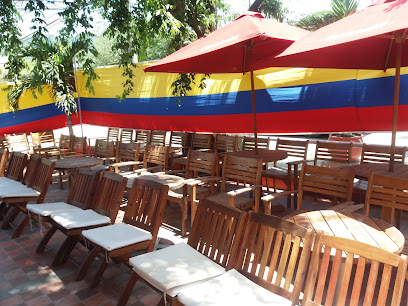
Aurelia Pub ° Hosting
Experience the vibrant nightlife of Santa Marta at Aurelia Pub, a lively cocktail bar and disco club in the historic center.
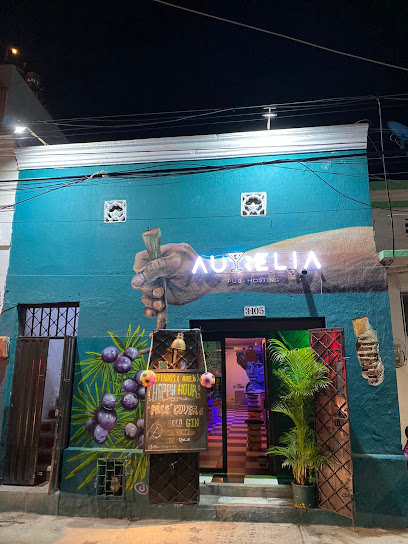
Local Phrases about Tayrona National Natural Park
-
- Hello¡Hola!
[oh-lah] - Goodbye¡Adiós!
[ah-dee-ohs] - YesSí
[see] - NoNo
[noh] - Please/You're welcomePor favor/De nada
[por fah-bor/de nah-dah] - Thank youGracias
[grah-see-ahs] - Excuse me/SorryPerdón
[pair-dohn] - How are you?¿Cómo estás?
[koh-moh ehs-tahs] - Fine. And you?Bien. ¿Y tú?
[bee-ehn. ee too] - Do you speak English?¿Hablas inglés?
[ah-blahs een-glehs] - I don't understandNo entiendo
[noh ehn-tee-ehn-doh]
- Hello¡Hola!
-
- I'd like to see the menu, pleaseMe gustaría ver el menú, por favor
[meh goos-tah-ree-ah behr ehl meh-noo, por fah-bor] - I don't eat meatNo como carne
[noh koh-moh kahr-neh] - Cheers!¡Salud!
[sah-lood] - I would like to pay, pleaseMe gustaría pagar, por favor
[meh goos-tah-ree-ah pah-gahr, por fah-bor]
- I'd like to see the menu, pleaseMe gustaría ver el menú, por favor
-
- Help!¡Ayuda!
[ah-yoo-dah] - Go away!¡Vete!
[veh-teh] - Call the Police!¡Llama a la policía!
[yah-mah ah lah poh-lee-see-ah] - Call a doctor!¡Llama a un médico!
[yah-mah ah oon meh-dee-koh] - I'm lostEstoy perdido/a
[ehs-toy pair-dee-doh/ah] - I'm illEstoy enfermo/a
[ehs-toy ehn-fehr-moh/ah]
- Help!¡Ayuda!
-
- I'd like to buy...Me gustaría comprar...
[meh goos-tah-ree-ah kohm-prahr] - I'm just lookingSolo estoy mirando
[soh-loh ehs-toy mee-rahn-doh] - How much is it?¿Cuánto cuesta?
[kwan-toh kwes-tah] - That's too expensiveEsto es demasiado caro
[ehs-toh ehs deh-mah-syah-doh kahr-oh] - Can you lower the price?¿Puede bajar el precio?
[pweh-deh bah-hahr ehl pree-syoh]
- I'd like to buy...Me gustaría comprar...
-
- What time is it?¿Qué hora es?
[keh oh-rah ehs] - It's one o'clockEs la una
[ehs lah oo-nah] - Half past (10)Son las diez y media
[sohn lahs dyehs ee meh-dee-ah] - MorningMañana
[mah-nyah-nah] - AfternoonTarde
[tahr-deh] - EveningNoche
[noh-cheh] - YesterdayAyer
[ah-yehr] - TodayHoy
[oy] - TomorrowMañana
[mah-nyah-nah] - 1Uno
[oo-noh] - 2Dos
[dohs] - 3Tres
[trehs] - 4Cuatro
[kwah-troh] - 5Cinco
[seen-koh] - 6Seis
[says] - 7Siete
[syeh-teh] - 8Ocho
[oh-choh] - 9Nueve
[nweh-veh] - 10Diez
[dyehs]
- What time is it?¿Qué hora es?
-
- Where's a/the...?¿Dónde está...?
[dohn-deh ehs-tah] - What's the address?¿Cuál es la dirección?
[kwal ehs lah dee-rehk-syohn] - Can you show me (on the map)?¿Puedes mostrarme (en el mapa)?
[pweh-dehs mohs-trar-meh (ehn ehl mah-pah)] - When's the next (bus)?¿Cuándo es el próximo (autobús)?
[kwan-doh ehs ehl proh-ksee-moh (ow-toh-boos)] - A ticket (to ....)Un boleto (a ...)
[oon boh-leh-toh (ah ...)]
- Where's a/the...?¿Dónde está...?
History of Tayrona National Natural Park
-
Long before the Spanish conquest, the region now known as Tayrona National Natural Park was home to the Tayrona civilization. This ancient society, which thrived between the 5th and 16th centuries, is renowned for its advanced agricultural techniques, intricate goldwork, and complex social structures. The Tayrona people built terraced agricultural fields, stone-paved roads, and circular stone structures that still stand today as a testament to their engineering prowess.
-
The arrival of the Spanish in the 16th century marked a dramatic shift for the Tayrona people. The Spanish sought to exploit the region's rich resources, particularly its gold. This led to conflict and eventual subjugation of the Tayrona civilization. Many Tayrona artifacts were looted, and the indigenous population suffered greatly from diseases brought by the Europeans, to which they had no immunity.
-
In the 20th century, the ruins of the ancient Tayrona civilization began to attract the attention of archaeologists. The most famous site, Ciudad Perdida, or 'Lost City,' was discovered in 1972. This site, often compared to Machu Picchu, offers a glimpse into the sophisticated urban planning and architecture of the Tayrona people. Efforts to excavate and preserve these archaeological treasures continue to this day.
-
Tayrona National Natural Park was established in 1964 to protect the region's unique biodiversity and cultural heritage. Covering approximately 150 square kilometers, the park encompasses tropical rainforests, mangrove swamps, and stunning beaches along the Caribbean coast. It serves as a sanctuary for various species of flora and fauna, as well as a vital link to Colombia's indigenous past.
-
In recent decades, there has been a resurgence of interest in the cultural heritage of the Tayrona people. Descendants of the Tayrona, including the Kogi, Arhuaco, and Wiwa communities, continue to live in the region and maintain their traditional ways of life. These communities play an essential role in the conservation efforts of the park, advocating for the protection of their ancestral lands and sharing their knowledge of sustainable living with visitors.
Tayrona National Natural Park Essentials
-
Tayrona National Natural Park is located on the Caribbean coast of Colombia, near the city of Santa Marta. The nearest international airport is Simón Bolívar International Airport (SMR) in Santa Marta. From the airport, you can take a taxi or a bus to the park entrance, which is approximately a 1-hour drive. Alternatively, you can fly into El Dorado International Airport (BOG) in Bogotá and take a domestic flight to Santa Marta.
-
Once in Santa Marta, you can reach Tayrona National Natural Park by bus, taxi, or private car. Public buses depart regularly from the city center and drop you off at the park's main entrances, such as El Zaino or Calabazo. Taxis are also an option but are more expensive. Inside the park, be prepared to walk or hike, as motor vehicles are not allowed beyond certain points. Horses are available for rent for those who prefer not to walk long distances.
-
The official currency of Colombia is the Colombian Peso (COP). Credit cards are accepted in some hotels, restaurants, and shops in Santa Marta, but cash is essential for transactions within the park. ATMs are available in Santa Marta, so it is advisable to withdraw sufficient cash before heading to the park. The park entrance fee must be paid in cash.
-
Tayrona National Natural Park is generally safe for tourists. However, it is recommended to take standard precautions. Avoid isolated areas, especially at night, and be cautious with your belongings. While Santa Marta is relatively safe, certain neighborhoods should be avoided due to higher crime rates targeting tourists. Always ask locals or your accommodation for advice on which areas to avoid.
-
In case of emergency, dial 123 for immediate assistance. There are ranger stations within the park equipped to handle emergencies and provide first aid. It is advisable to carry a basic first-aid kit and have travel insurance that covers medical emergencies. For minor health issues, there are pharmacies in Santa Marta where you can purchase over-the-counter medications.
-
Fashion: Do wear comfortable and breathable clothing suitable for hiking. Avoid wearing flashy jewelry or expensive accessories. Religion: Do respect local customs and the sacred sites within the park, such as indigenous territories. Public Transport: Do be respectful and patient when using public transportation. Don't expect fixed schedules; buses often run on flexible timings. Greetings: Do greet people with a simple 'Hola' or 'Buenos días/tardes.' A friendly demeanor is appreciated. Eating & Drinking: Do try local delicacies and fresh seafood. Don't litter; always dispose of your trash responsibly.
-
To experience Tayrona National Natural Park like a local, visit the park's lesser-known beaches such as Playa Cristal and Playa Brava. Engage with the indigenous Kogi people if you have the opportunity, as they offer valuable insights into the park's history and culture. Try to visit during the weekdays to avoid the weekend crowds, and bring your own snorkeling gear to explore the vibrant marine life. For a unique experience, consider staying overnight in one of the park's eco-habs or camping areas.
Nearby Cities to Tayrona National Natural Park
-
Things To Do in Barranquilla
-
Things To Do in Riohacha
-
Things To Do in Cartagena
-
Things To Do in Sincelejo
-
Things To Do in Cúcuta
-
Things To Do in Oranjestad
-
Things To Do in Palm Beach
-
Things To Do in Sero Blanco
-
Things To Do in Tanki Leendert
-
Things To Do in Noord
-
Things To Do in Paradera
-
Things To Do in Pos Chiquito
-
Things To Do in Savaneta
-
Things To Do in Santa Cruz
-
Things To Do in San Nicolas











